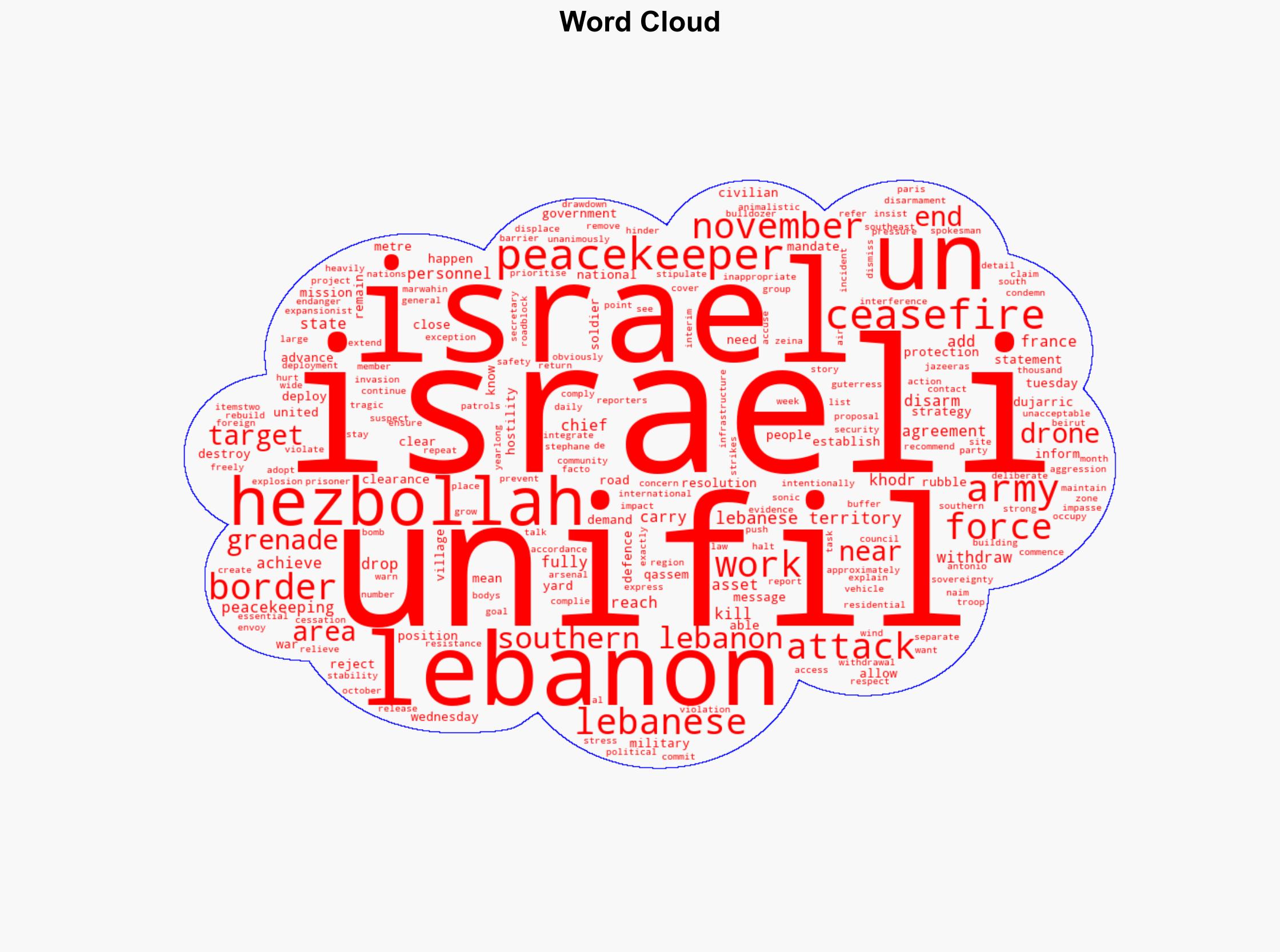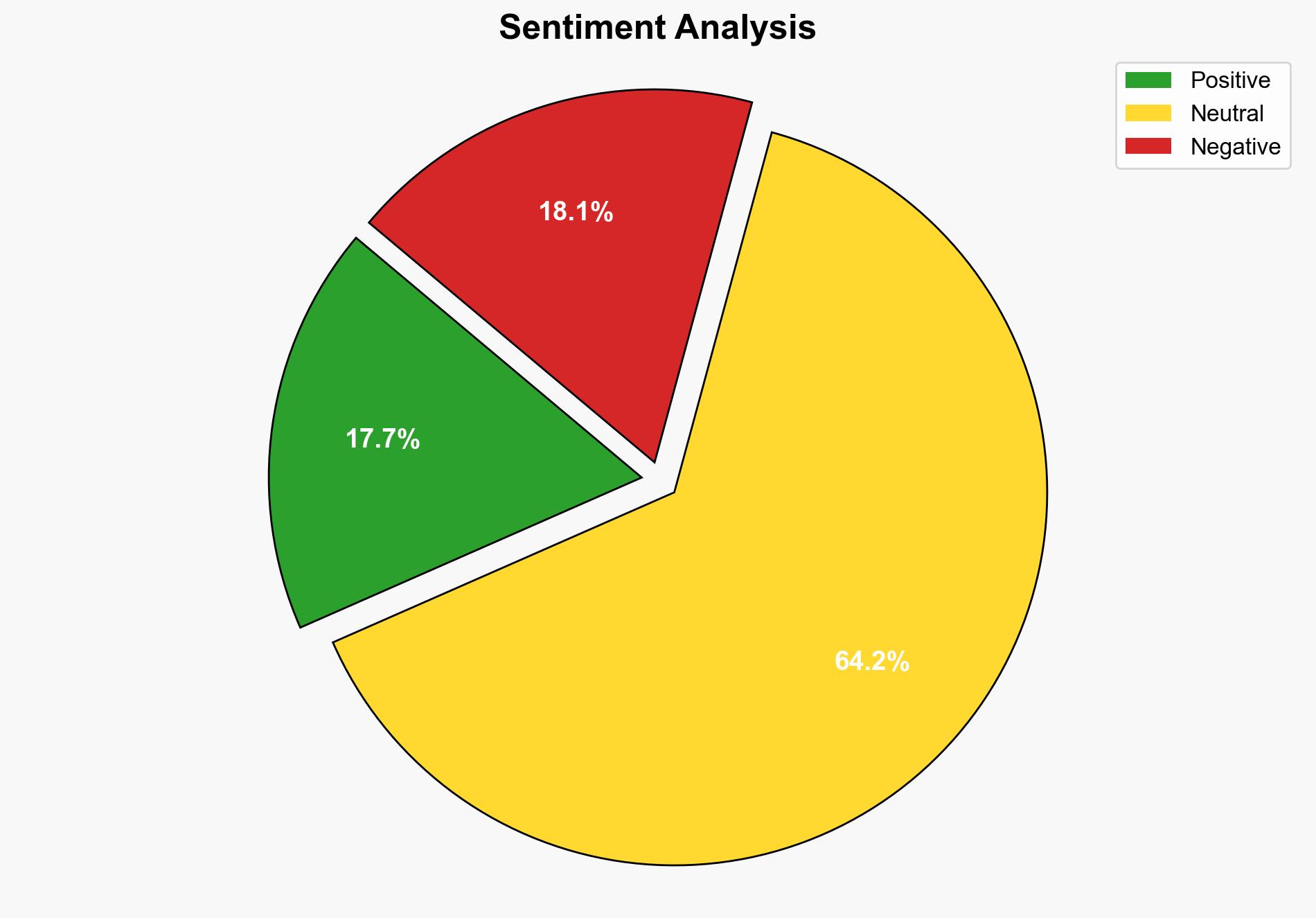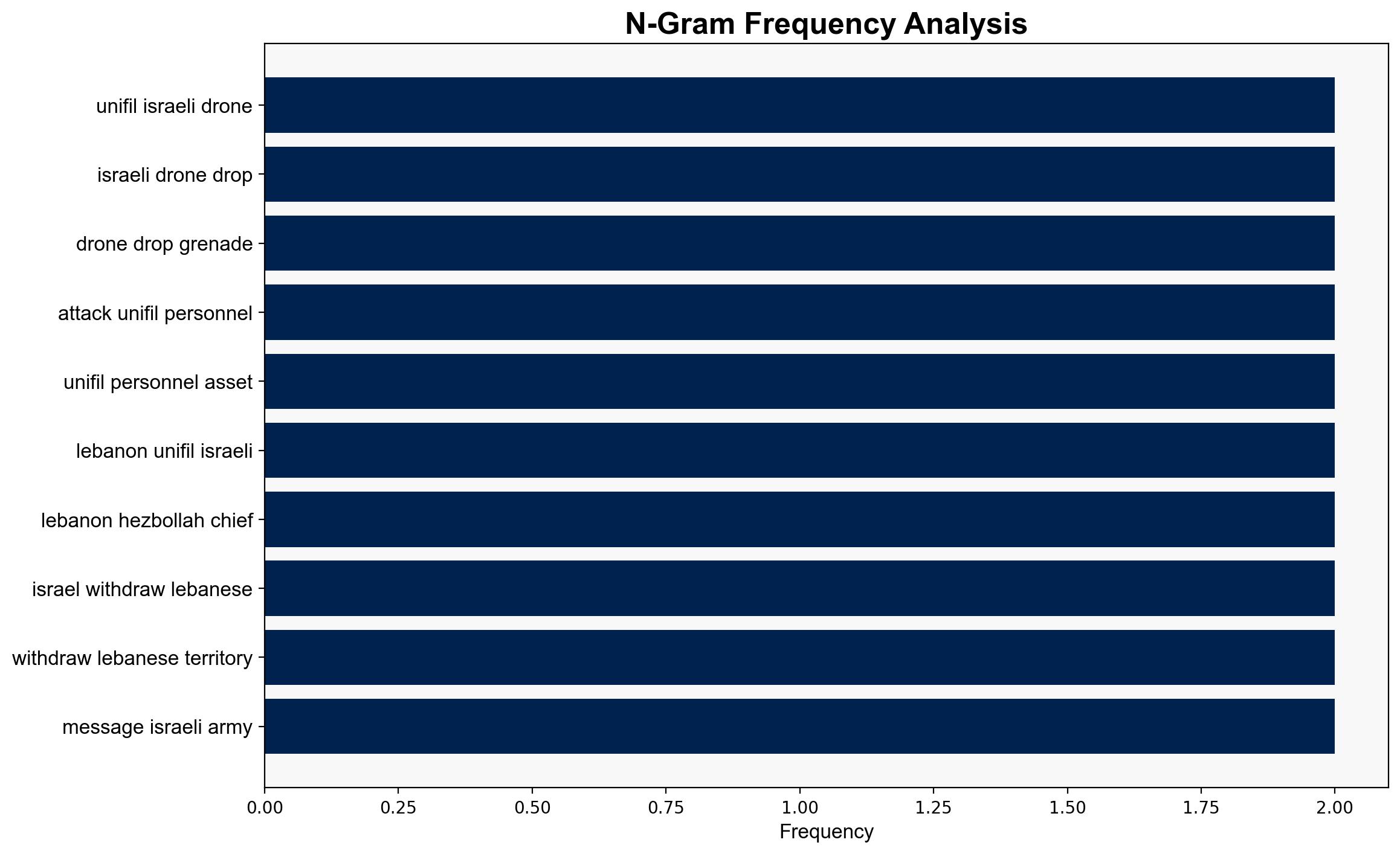UNIFIL says Israeli drones drop grenades close to peacekeepers in Lebanon – Al Jazeera English
Published on: 2025-09-03
Intelligence Report: UNIFIL says Israeli drones drop grenades close to peacekeepers in Lebanon – Al Jazeera English
1. BLUF (Bottom Line Up Front)
The most supported hypothesis is that the Israeli military’s actions were intended as a deterrent against Hezbollah activities near the border, rather than a deliberate attack on UNIFIL peacekeepers. Confidence in this assessment is moderate due to the complexity of regional dynamics and potential biases in reporting. Recommended action includes diplomatic engagement to reinforce ceasefire agreements and ensure the safety of peacekeeping forces.
2. Competing Hypotheses
1. **Hypothesis 1**: The Israeli military intentionally targeted UNIFIL peacekeepers to disrupt their operations and assert control over the border area.
– **Supporting Evidence**: The proximity of the grenade drop to UNIFIL personnel and vehicles, and the historical context of Israeli-Hezbollah tensions.
– **Contradictory Evidence**: Statements from UNIFIL and international bodies suggesting no injuries and the possibility of miscommunication.
2. **Hypothesis 2**: The Israeli military’s actions were aimed at deterring Hezbollah activities, with the proximity to UNIFIL being an unintended consequence.
– **Supporting Evidence**: Israel’s historical pattern of preemptive actions against perceived threats, and the lack of direct harm to peacekeepers.
– **Contradictory Evidence**: The incident’s timing and location could suggest a more deliberate message to UNIFIL.
Using ACH 2.0, Hypothesis 2 is better supported due to the broader strategic context and the absence of direct harm to peacekeepers, indicating a deterrent rather than an aggressive posture.
3. Key Assumptions and Red Flags
– **Assumptions**: It is assumed that the Israeli military had full situational awareness of UNIFIL’s operations. Another assumption is that Hezbollah’s presence in the area necessitates Israeli deterrence.
– **Red Flags**: Potential bias in reporting from regional media sources, and the lack of independent verification of the incident details.
– **Blind Spots**: Limited insight into Hezbollah’s immediate activities and intentions in the area, and potential internal Israeli military communications.
4. Implications and Strategic Risks
– **Escalation Risks**: Increased military engagements could lead to broader regional instability, impacting civilian safety and international relations.
– **Geopolitical Dimensions**: Strained Israel-Lebanon relations might affect broader Middle Eastern alliances and U.N. peacekeeping mandates.
– **Psychological Impact**: Heightened tensions could lead to increased fear and uncertainty among local populations and international stakeholders.
5. Recommendations and Outlook
- Engage in diplomatic dialogue to reaffirm ceasefire commitments and prevent further incidents.
- Enhance intelligence-sharing mechanisms between UNIFIL and Israeli forces to prevent misunderstandings.
- Scenario Projections:
- **Best Case**: Successful diplomatic engagement leads to reinforced ceasefire and reduced tensions.
- **Worst Case**: Continued incidents escalate into broader conflict, drawing in regional powers.
- **Most Likely**: Ongoing low-level tensions with periodic incidents, requiring continuous monitoring and diplomatic efforts.
6. Key Individuals and Entities
– **Antonio Guterres**: U.N. Secretary-General expressing concern over the incident.
– **Stephane Dujarric**: Spokesman for the U.N. Secretary-General.
– **Zeina Khodr**: Al Jazeera reporter providing insights from Beirut.
7. Thematic Tags
national security threats, regional stability, peacekeeping operations, Middle East conflict




